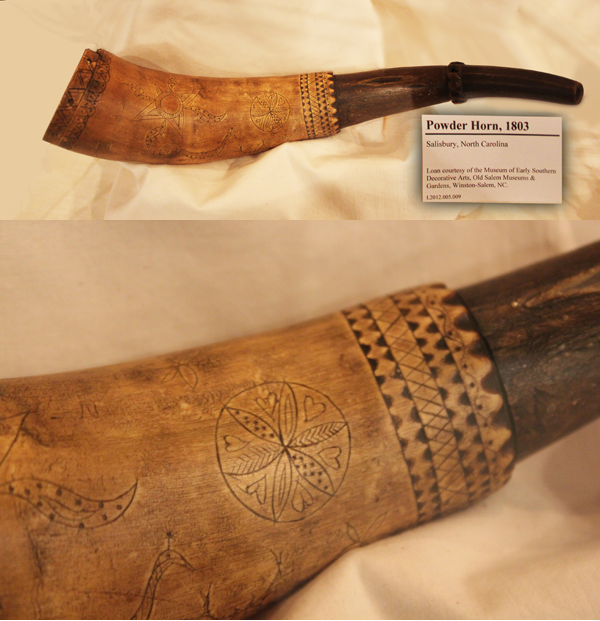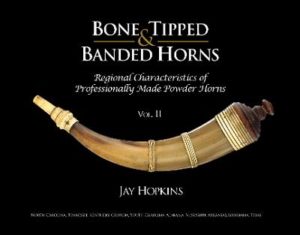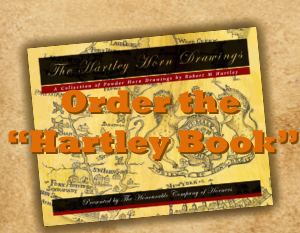September 2012 Message from the Guildmaster
September 7, 2012 by Jeff Bibb
Filed under Message from the Guildmaster
Greetings:
With the end of summer in sight, many of us are looking forward to the cooler temperatures and glorious colors that mark our fall season. I know I am, and with it, the opportunity to get outside more and explore the woods and mountains. Many of our ancestors would be anticipating this change with much hard work as they finished putting up stores for the coming winter and its meager times. Perhaps they were checking their shooting supplies in anticipation of hunts that would provide meat for the cold months ahead. A new bag or powder horn might have been in order, and the task of making it would soon be in hand.
As a historical horn working organization, we all take pride in the work we produce, ever striving to make a more “perfect” piece than the last, and looking to the historical work we emulate as inspiration. But, how traditional is our work? I do not mean this in any mean-spirited sense, but rather as a close examination of our methods. As 21st. Century residents, we are empowered with more tools and gadgets to accomplish our means than any time in history. We happily employ our electric lathes, deep fryers, drills, sanders, engravers, brightly lit magnifiers and other implements as we work, all the while wondering how we can use them to make the next horn even better. There is certainly nothing wrong with this since it saves us an enormous amount of time and effort, but are we missing the spirit of the whole enterprise somehow with their use?
I have been thinking about this a lot recently as my wife, Jan, and I struggle with ways make everything in our lives less complicated, possess less of a “consumer” mentality, and become more responsible people to the earth on which we live. Perhaps we should contemplate some of this in our own horn work, while embracing the true art of the past that we so cherish. I strongly we believe we can learn from the past in this way, and help others learn our art as well.
Therefore, I am putting out an invitation and a challenge to everyone in our guild, long before our annual meeting next March. The gist of it that each of us should make a horn using only the resources that would have been available to our ancestors 200 or more years ago. Do not allow ANY exceptions to this rule with your work. It is an honor system, and you are on your own. What this all means is that you will have to make a presentable, working powder horn or useful horn object with the goal of exhibiting, and possibly having it judged at our next meeting! I plan to have a special table or two available to display our work, and there may be a very special judge in attendance to see just how well we all do. If this occurs it will be a separate judging from our regular competition, which will take place as usual. Sounds like fun to me, and I hope you agree and will contribute your talents to this special exhibit.
The simple rules are as follows:
1) There will be three classifications to this work…. Plain powder horn, decorated powder horn, and horn objects.
2) Materials… may be any raw horn, either polished and cleaned, or green raw, as available. Many folks will not have access to raw horns, so an exception of sorts must be made here. Pins, nails, staples, etc. must all be fabricated from raw stock. No store-bought nails, pins, drawer pulls or commercial additions are allowed.
3) NO power tools of any kind may be employed in the construction of the horn or horn object. Base plugs and /or tips must be shaped by hand, and / or turned on an appropriate period lathe without electricity or other modern power. Only hand-twist drills, bow drills, bit and brace, or burning may be used for drilling. Carving and engraving must be accomplished only with items that were available in historic times. For engraved – scrimshawed horns, no circular lights or other magnifying devices may be used, only natural or regular indoor light. (candles, lanterns, or firelight are preferred).
4) Horns may be shaped by any traditional methods such as heating with water or oil, hot air – fires, and worked only with tools available in the period. Files, draw knives, grails, pocket knives, glass pieces or other scrapers, etc. are perfectly acceptable. Sanding / smoothing may be accomplished by scraping, sanding with pumice stone, etc., ie. any method that was available in the 18th. century.
5) If used, colors and finishes are restricted to those only available in the time. RIT dye, modern leather dyes, or other modern coloring is not allowed. Aqua Fortis, berry dyes, tobacco stains, onion stains, oil paints, natural dyes, etc. or other documented historical coloration is permitted.
So there you have it. One of my primary goals as your Guildmaster is to encourage education among the public as well as among ourselves. I believe that this project will teach many of us a thing or two about what making a horn was really like in our past. If you already employ all of the methods I have described in your work, you are producing a product with true historical significance. For the rest of us, it may be an exercise in humility, but more an opportunity to connect ourselves with the true art of the past that we call horns.
Good luck! I look forward to seeing all of you, and your projects in March. As usual, observations, suggestions criticisms or other comments are always welcome.
All the best,
Jeff Bibb
Guildmaster

1803 Powder Horn. Salisbury, NC. From the MESDA collection.





Great idea Jeff!
You’re the man. Great idea. Release the hounds!
Jim Leach
Jeff,
It sure has been a busy summer and fall, so much so that I’m just now catching up on guild news here on the website.
I think the traditional horn work challenge is a capital idea and am really looking forward to entering an item or two. Hope this note finds you well.
Mike Burke
Where should one look for the appropriate tools available? Files were available, scrapers (either glass or knife blades), some sanding/polishing brick dust or sand…what of a coping or jewelers saw? This sounds like a good way to try a primitive (not crude) horn or two.
Rick:
I think your tool selection sounds just fine. Any manually operated tools would be in line with what I think was available at the time. Have fun and good luck with your project.
Jeff Bibb
Guildmaster